
The Dawn-a-Guana
Adult green iguanas are almost entirely vegetarians, consuming fruit, leaves and flowers for sustenance. Babies, however, rely on a healthy assortment of insects and spiders to supplement. Every morning, rain or shine, I was greeted by this youngster and a companion just a few feet from my mosquito net. Dos Brazos de Tigre, Costa Rica.
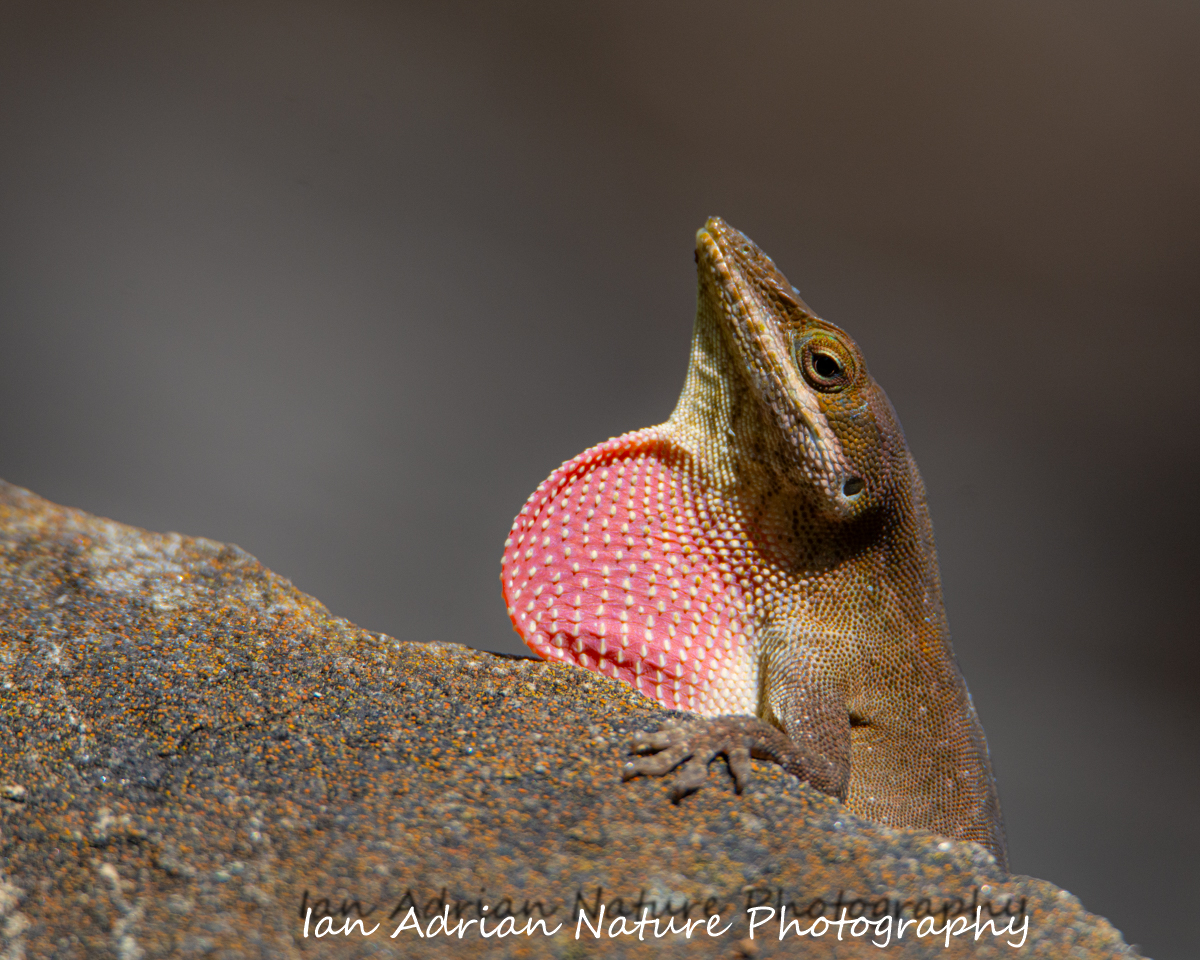
A Proud Display
Male green anoles are extremely territorial. After being startled or challenged by another male, they are quite eager to show off. The displayed "dewlap" is only visible when the owner is intentionally inflating it. Chimney Rock, NC.

Green Iguana
Adult green iguanas are almost entirely vegetarians, consuming fruit, leaves and flowers for sustenance. Babies, however, rely on a healthy assortment of insects and spiders to supplement. Every morning, rain or shine, I was greeted by this youngster and a companion just a few feet from my mosquito net. Dos Brazos de Tigre, Costa Rica.
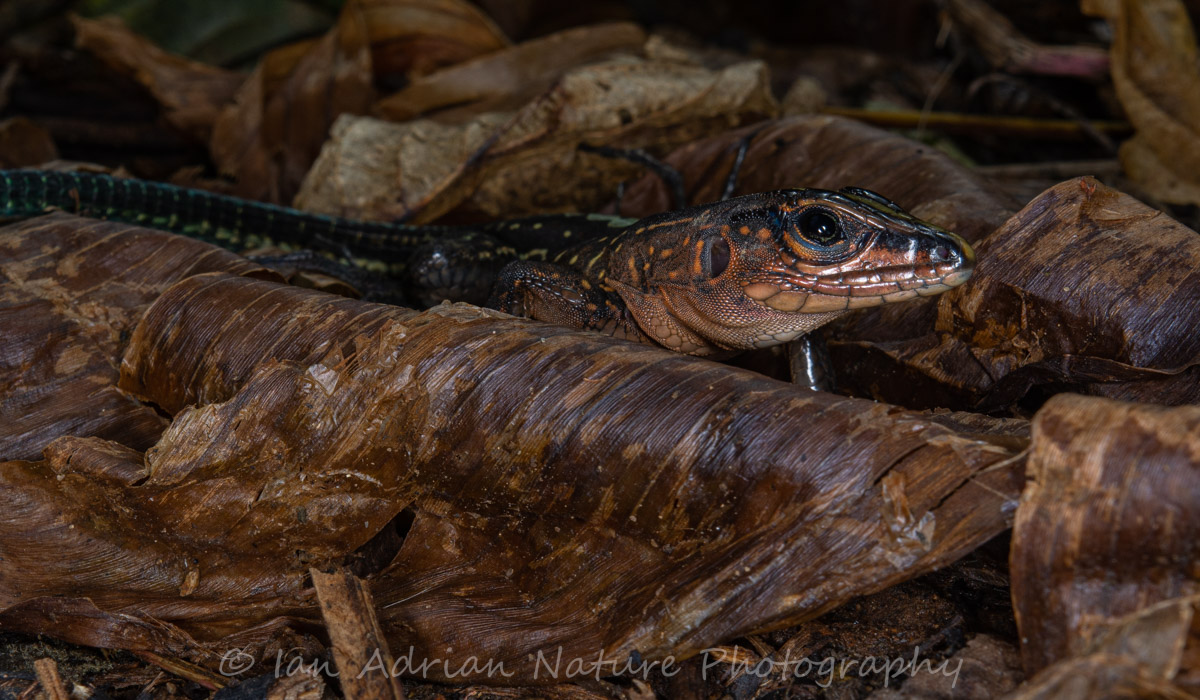
Festive Ameiva
These hyperactive ground-dwellers are extremely fast and seldom relax when a human blunders nearby. By exercising patience and moving slowly, this beautiful creature allowed me to approach within inches, slowly backing away after so as to maintain respect. Dos Brazos, Costa Rica.
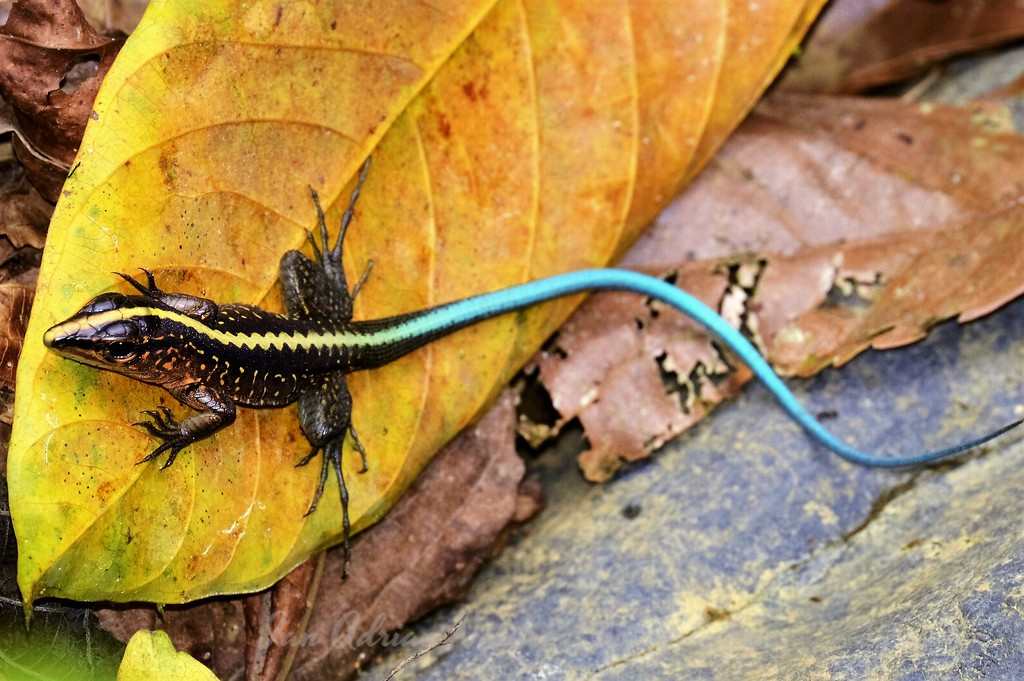
Festive Ameiva, Festive Leaf
Hyperactive, terrestrial hunters, festive ameivas never seem to slow down as they scour the jungle floor for insects and spiders. Dos Brazos de Osa, Costa Rica.
Purchase This Print
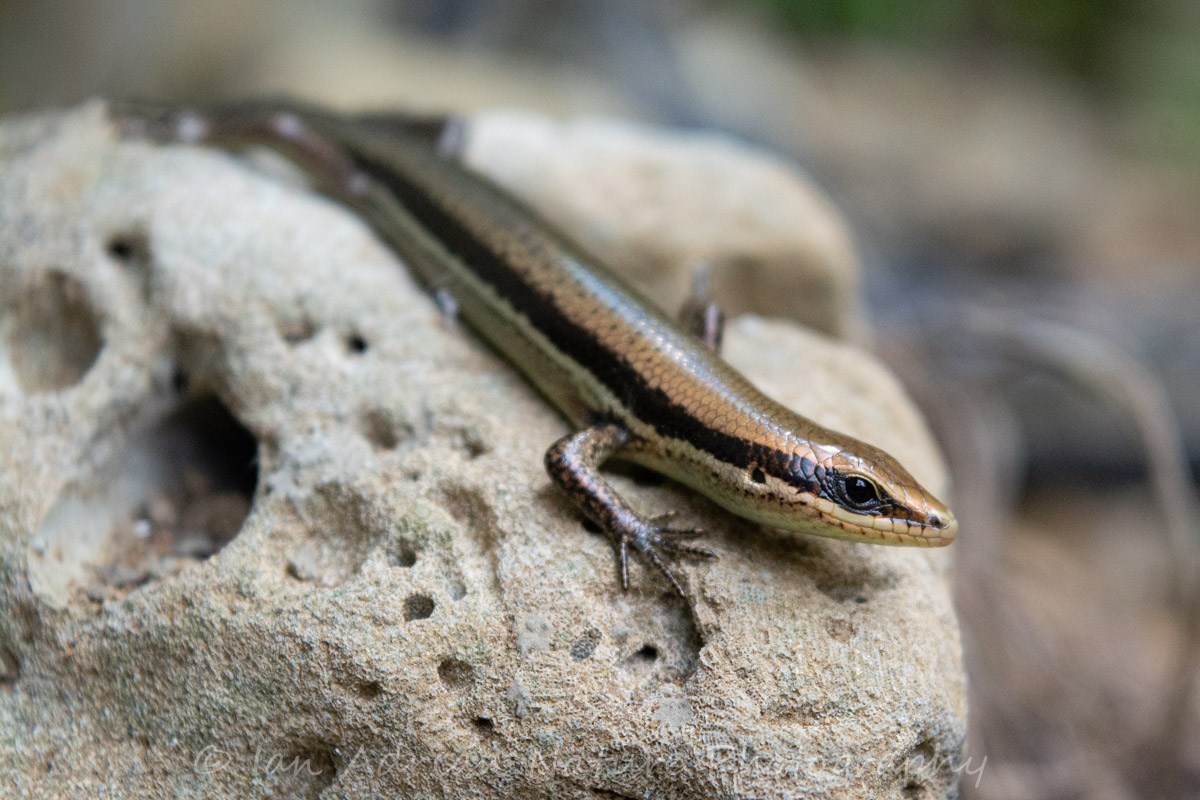
Sunning Skink
Despite the wet season's frequently-overcast skies, exposed rocks still retain enough heat for basking. This beautiful black-spotted skink was in such a state of bliss that he / she allowed me to slowly creep within inches without batting an eye. Puerto Jimenez, Costa Rica.
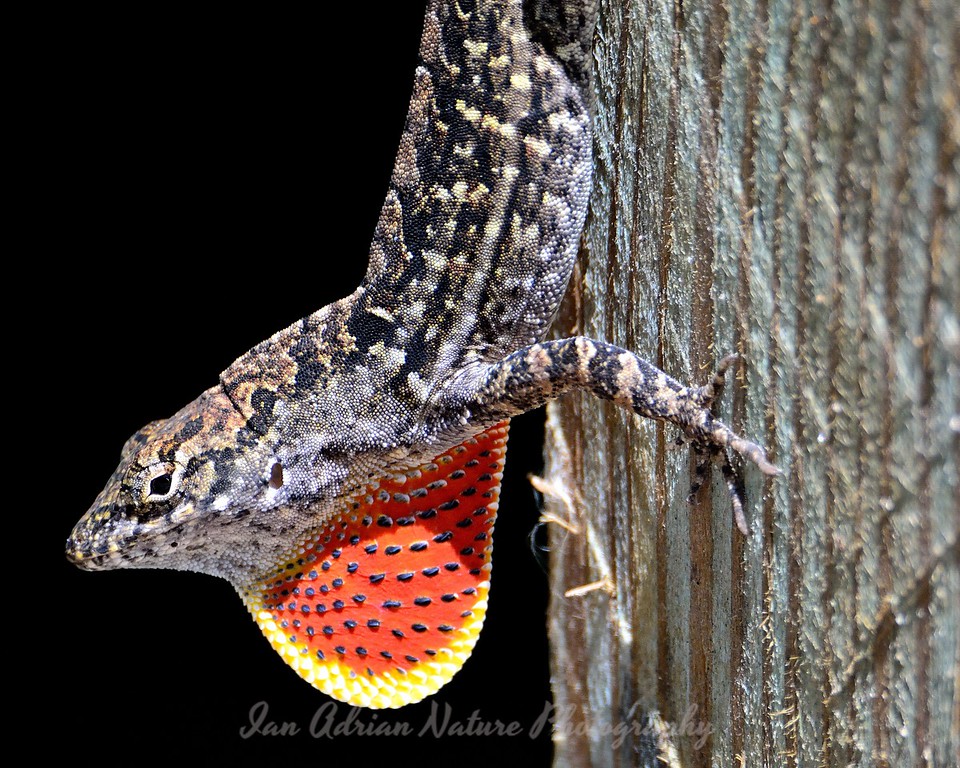
Brown Anole
Brown anoles are considered a non-native species within the Southern US. Being larger and more aggressive, they have mostly displaced the native green anoles in the lower reaches of trees. Green anoles, however, are highly adept in tree canopies, whereas their brown cousins seem to be less so.
This fellow is performing a territorial display. Photo taken at Lake Louisa State Park, FL, USA.
Purchase This Print

The Bitten Basilisk
The persistent horsefly pictured would not stop landing on the nose of Mr Basilisk. Repeatedly shaking his head, the tenacious fly would immediately return to the scaly buffet. Apparently we aren't alone in feeling frustrated at biting insects! Puerto Jimenez, Costa RIca.
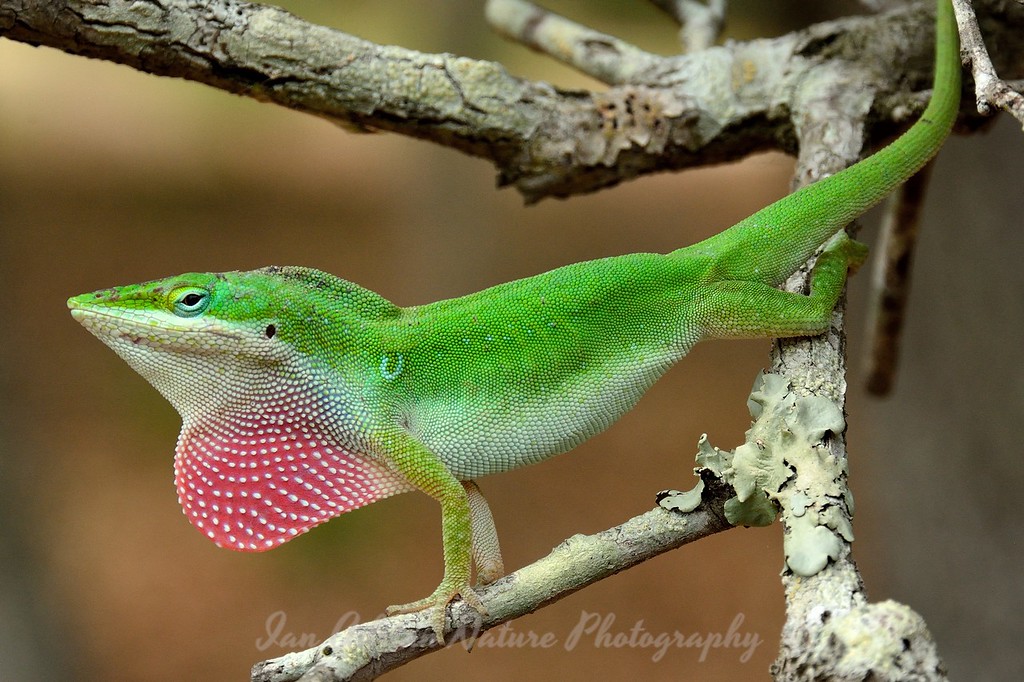
Green Anole
Green anoles are only actually green when they're feeling healthy and confident. They turn brown when encountering a predator, but when he's feeling extra brazen, a male might go as far as to perform territorial "push-ups," while puffing out his red dewlap (throat). Photo taken at Lake Louisa State Park, FL, USA.
Purchase This Print
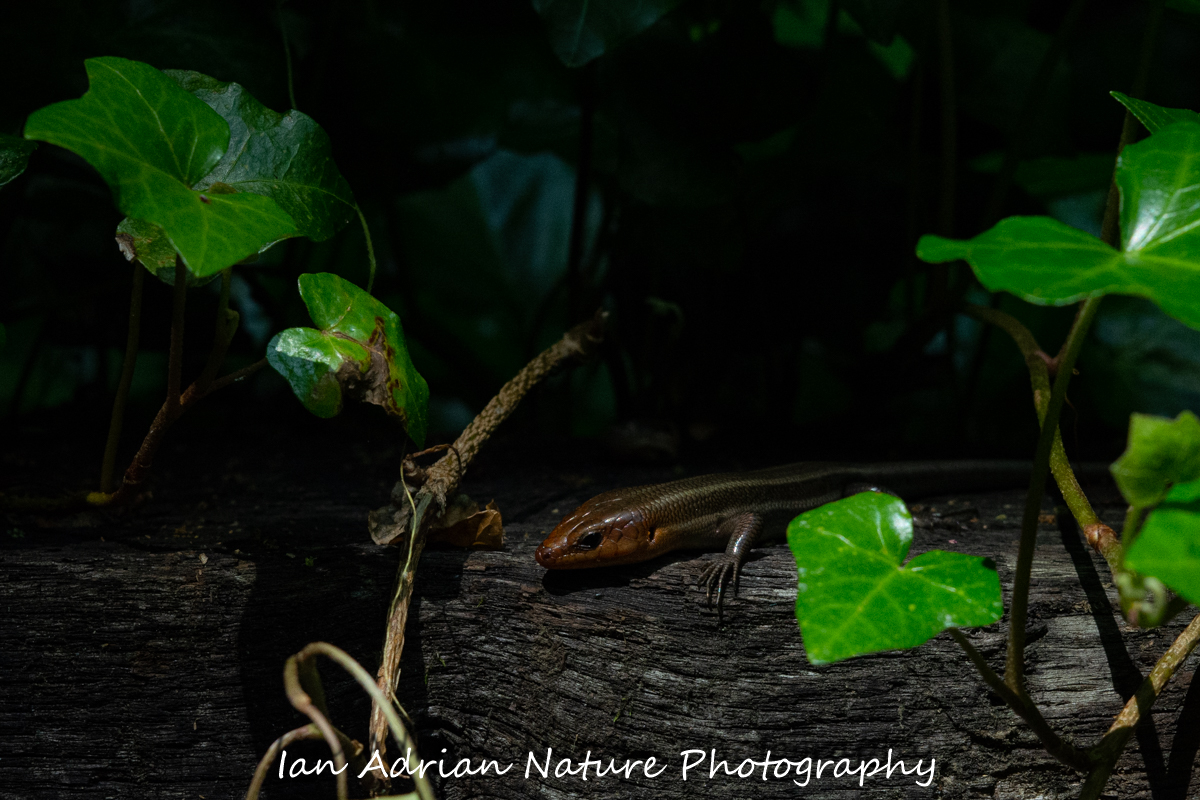
Stealthy Skink
A five-lined skink creeps stealthily beneath thick ivy. At a small opening, he briefly pauses to absorb the warmth of well-filtered sunlight. Chimney Rock, NC.
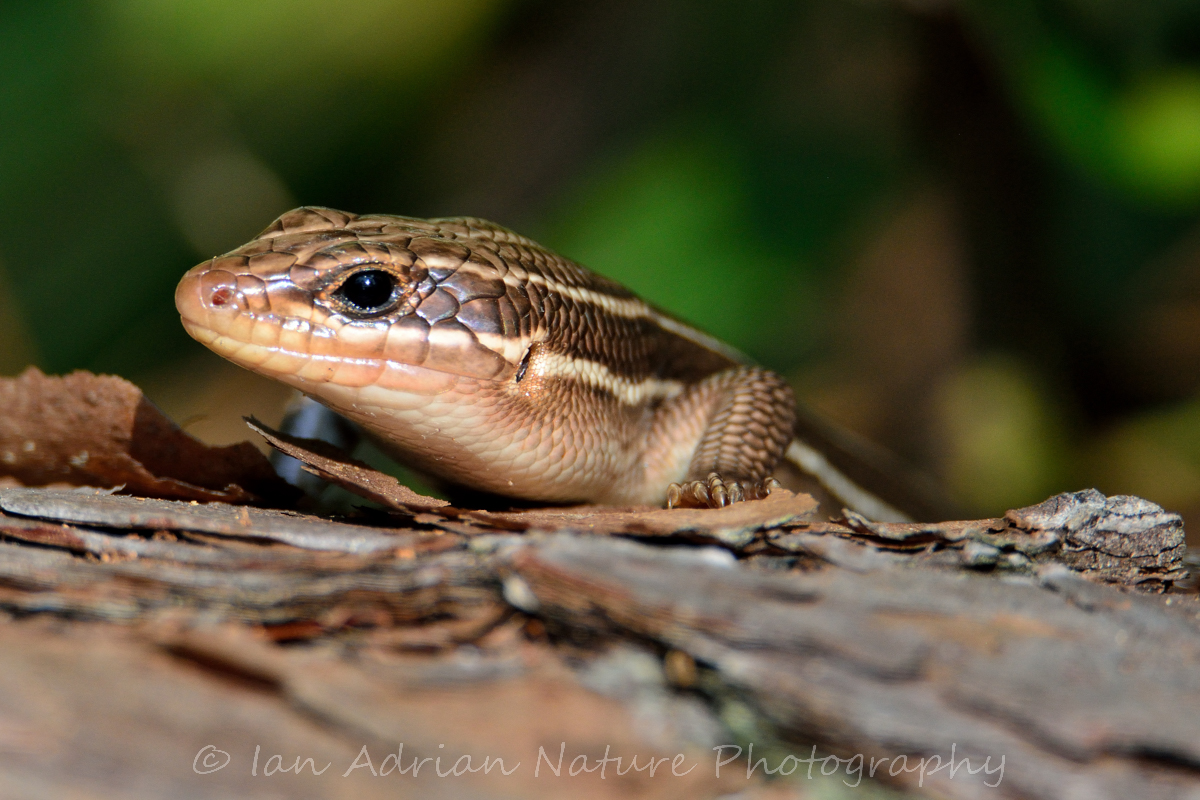
Five-Lined Skink
Skinks have short, stumpy legs and most species spend their time on or under the ground. This southern five-lined skink scurried right by my campsite at Stephen Foster State Park, GA.
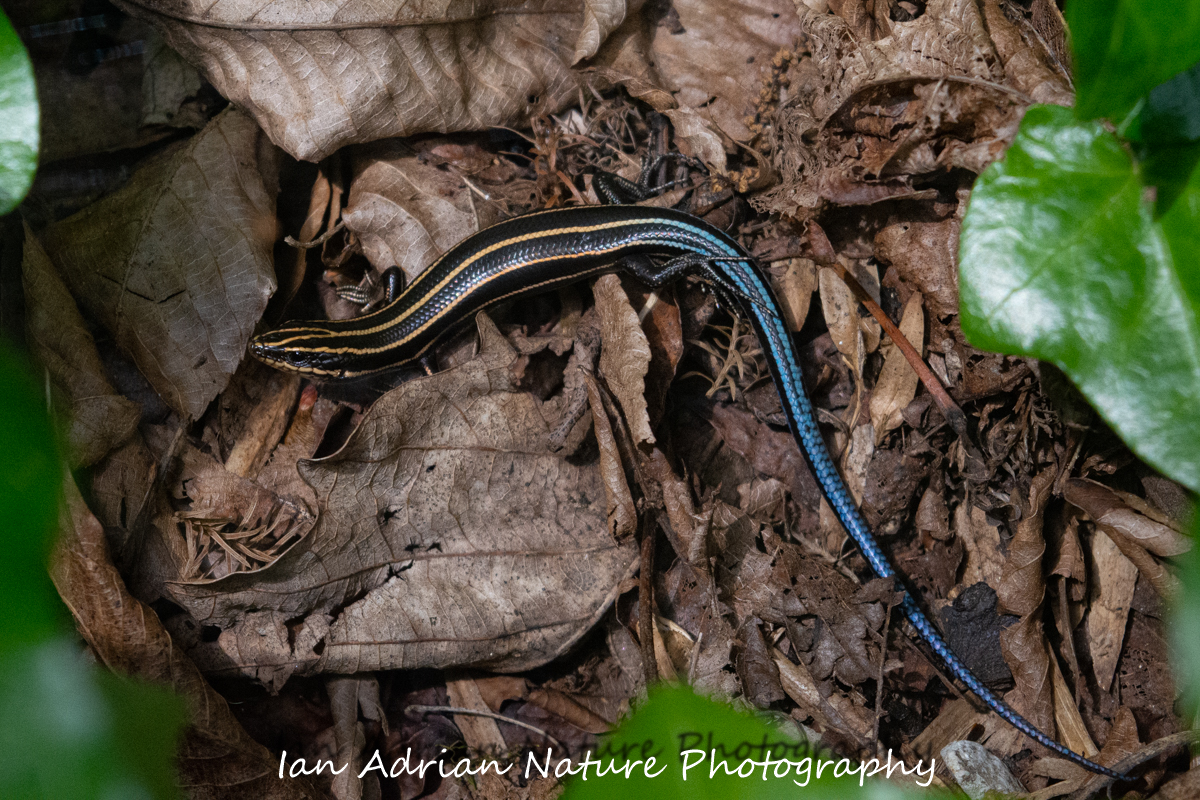
Baby Skink
Before reaching adulthood, young five-lined skinks sport the most magnificent, blue tails! Chimney Rock, NC.

The Dawn-a-Guana
Adult green iguanas are almost entirely vegetarians, consuming fruit, leaves and flowers for sustenance. Babies, however, rely on a healthy assortment of insects and spiders to supplement. Every morning, rain or shine, I was greeted by this youngster and a companion just a few feet from my mosquito net. Dos Brazos de Tigre, Costa Rica.

A Proud Display
Male green anoles are extremely territorial. After being startled or challenged by another male, they are quite eager to show off. The displayed "dewlap" is only visible when the owner is intentionally inflating it. Chimney Rock, NC.

Green Iguana
Adult green iguanas are almost entirely vegetarians, consuming fruit, leaves and flowers for sustenance. Babies, however, rely on a healthy assortment of insects and spiders to supplement. Every morning, rain or shine, I was greeted by this youngster and a companion just a few feet from my mosquito net. Dos Brazos de Tigre, Costa Rica.

Festive Ameiva
These hyperactive ground-dwellers are extremely fast and seldom relax when a human blunders nearby. By exercising patience and moving slowly, this beautiful creature allowed me to approach within inches, slowly backing away after so as to maintain respect. Dos Brazos, Costa Rica.

Festive Ameiva, Festive Leaf
Hyperactive, terrestrial hunters, festive ameivas never seem to slow down as they scour the jungle floor for insects and spiders. Dos Brazos de Osa, Costa Rica.
Purchase This Print

Sunning Skink
Despite the wet season's frequently-overcast skies, exposed rocks still retain enough heat for basking. This beautiful black-spotted skink was in such a state of bliss that he / she allowed me to slowly creep within inches without batting an eye. Puerto Jimenez, Costa Rica.

Brown Anole
Brown anoles are considered a non-native species within the Southern US. Being larger and more aggressive, they have mostly displaced the native green anoles in the lower reaches of trees. Green anoles, however, are highly adept in tree canopies, whereas their brown cousins seem to be less so.
This fellow is performing a territorial display. Photo taken at Lake Louisa State Park, FL, USA.
Purchase This Print

The Bitten Basilisk
The persistent horsefly pictured would not stop landing on the nose of Mr Basilisk. Repeatedly shaking his head, the tenacious fly would immediately return to the scaly buffet. Apparently we aren't alone in feeling frustrated at biting insects! Puerto Jimenez, Costa RIca.

Green Anole
Green anoles are only actually green when they're feeling healthy and confident. They turn brown when encountering a predator, but when he's feeling extra brazen, a male might go as far as to perform territorial "push-ups," while puffing out his red dewlap (throat). Photo taken at Lake Louisa State Park, FL, USA.
Purchase This Print

Stealthy Skink
A five-lined skink creeps stealthily beneath thick ivy. At a small opening, he briefly pauses to absorb the warmth of well-filtered sunlight. Chimney Rock, NC.

Five-Lined Skink
Skinks have short, stumpy legs and most species spend their time on or under the ground. This southern five-lined skink scurried right by my campsite at Stephen Foster State Park, GA.

Baby Skink
Before reaching adulthood, young five-lined skinks sport the most magnificent, blue tails! Chimney Rock, NC.
Cold-blooded but rarely clammy, reptiles are represented by such models as turtles, snakes, crocodilians, and lizards. When watching a large iguana basking on a rock, it’s easy to see the dinosaur ancestry (despite the types of changes that result from millions of years of evolution). Alligators and crocodiles, on the other hand, are nearly pristine replicas of their pre-historic lineage. Although much more commonly encountered in the tropics and deserts, some extremely well-adjusted reptile species can be found well into the arctic circle. This album features many shapes, sizes, and colors of lizards from the tropics, swamps, and wetlands of the Western Hemisphere.
